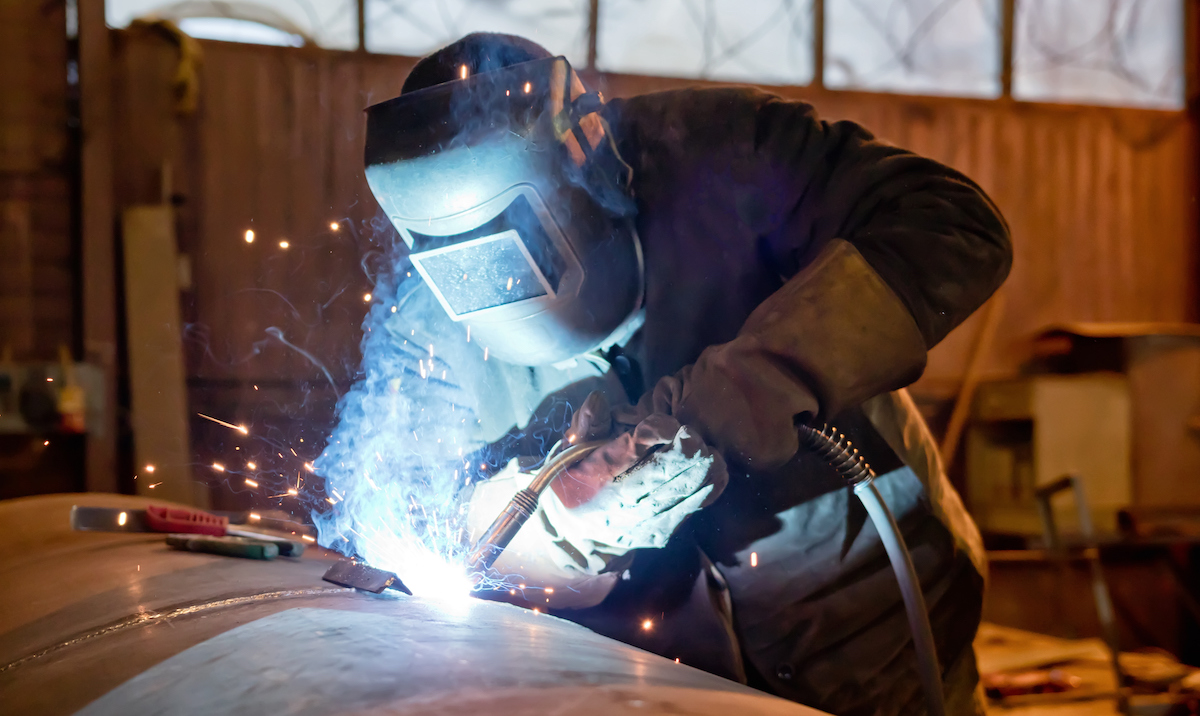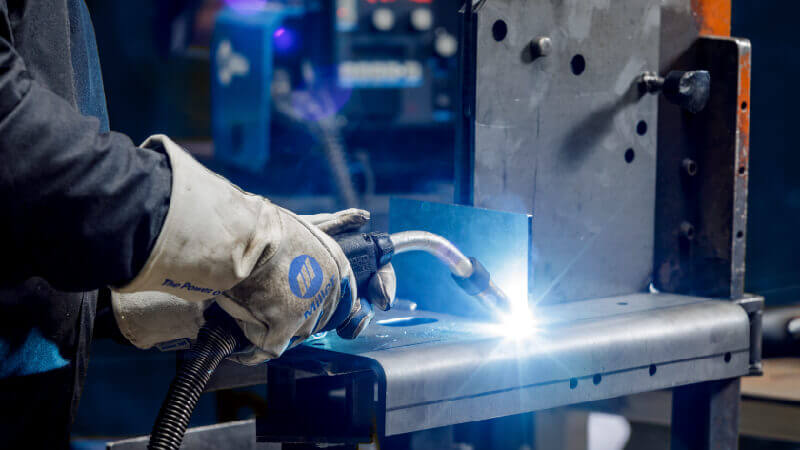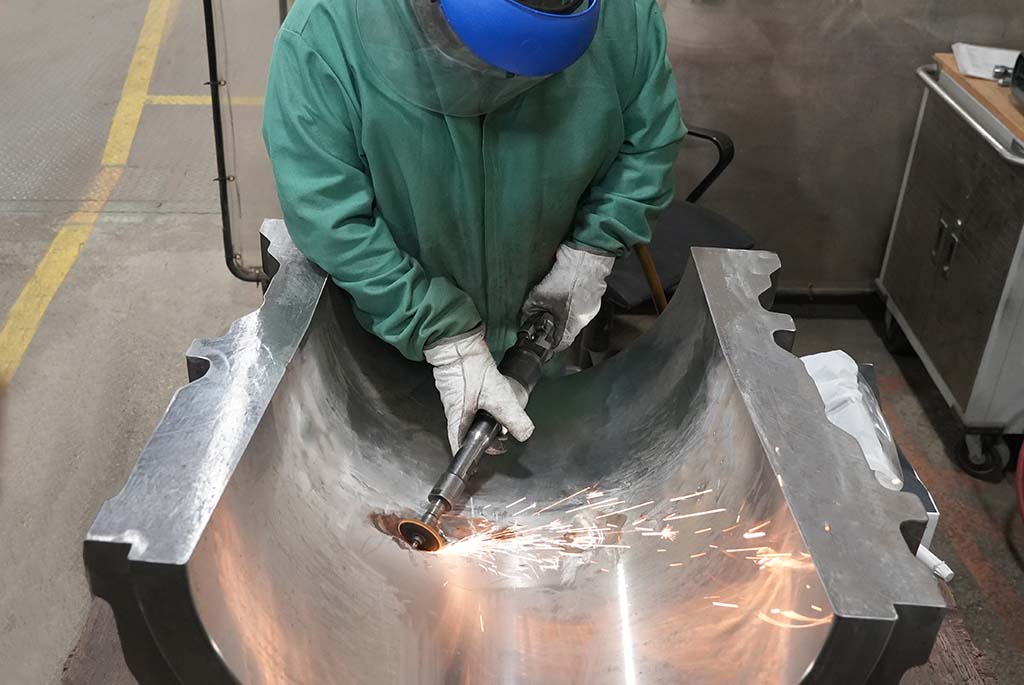Common Welding Repair Issues and Just How to Address Them Successfully
Welding repair services typically encounter a series of problems that can endanger the honesty of the end product. Common troubles consist of insufficient infiltration, porosity, and imbalance, amongst others. Each defect presents one-of-a-kind obstacles that call for specific methods for resolution. Understanding these problems is necessary for welders aiming to improve their skills and outcomes. This conversation will certainly discover these common welding repair service concerns and effective methods to address them.
Poor Infiltration
Inadequate penetration happens when the weld metal stops working to totally fuse with the base material, resulting in weak joints and potential architectural failures. This problem commonly comes from not enough warm input, inaccurate electrode angle, or improper welding speed. Welders might experience insufficient infiltration due to a miscalculation of the essential specifications for a certain material density or type. In addition, contamination on the base product's surface area can impede effective bonding, intensifying the issue. To attend to inadequate penetration, welders need to guarantee proper setups on their devices and maintain a clean work surface. Routine evaluation of welds is suggested to recognize any shortages early, enabling prompt adjustments and the prevention of jeopardized architectural integrity in welded settings up.
Porosity
Porosity is an usual flaw in bonded joints that manifests as tiny gas bubbles entraped within the weld metal. This defect can jeopardize the stability of the weld, bring about decreased stamina and potential failing under stress. Belgrade Welding. Porosity commonly occurs from contamination, dampness, or incorrect welding methods, which permit gases to leave right into the molten weld swimming pool. To attend to porosity, welders should guarantee proper surface preparation, preserve a tidy working environment, and use ideal welding parameters. Additionally, selecting the ideal filler product and protecting gas can alleviate gas entrapment. Normal assessment and testing of welds can assist recognize porosity early, assuring timely rehabilitative actions are taken, therefore protecting the quality and reliability of the welded structure
Imbalance
Misalignment in welding can occur from various variables, consisting of inappropriate configuration and thermal growth. Recognizing the source is necessary for efficient resolution. Several improvement methods are available to realign components and ensure structural honesty.
Reasons for Misalignment
Welding misalignment often comes from a selection of underlying concerns that can jeopardize architectural integrity. One primary cause is improper fit-up of elements prior to welding, which can cause gaps and unequal surfaces. Variants in thermal expansion during the welding process can likewise cause distortion, specifically if the products being signed up with have different coefficients of growth. Additionally, poor fixturing and securing may stop working to hold elements safely in place, resulting in movement during welding. Poorly kept devices, including welding machines and tools, might present variances in the weld grain, further adding to imbalance. Operator mistake, stemming from not enough training or experience, can also play a substantial function in developing misaligned welds.

Correction Techniques Available
Resolving imbalance successfully calls for a mix of rehabilitative strategies customized to the details concerns handy. One common method is making use of jigs or components to hold parts in the appropriate position throughout welding, guaranteeing regular alignment. In addition, preheating the materials can assist decrease distortion and improve fit-up. For considerable imbalance, mechanical realignment methods, such as making use of hydraulic jacks or clamps, can be utilized to correct the setting prior to welding. Post-weld warmth treatment might also be essential to alleviate tensions caused by imbalance. Cautious examination and change during the arrangement stage can stop misalignment problems from coming to be considerable troubles, promoting a smoother welding process and improving overall structural honesty.
Distortion
Distortion is a common obstacle in welding that can emerge from various elements, consisting of unequal heating and cooling. Understanding the reasons for distortion is essential for applying efficient prevention strategies. Addressing this concern not only improves architectural honesty but also improves the total top quality of the weld.
Reasons of Distortion
When based on the intense warm of welding, materials often go through adjustments that can cause distortion. This sensation largely develops from thermal growth and contraction during the welding procedure. As the weld location warms up, the material expands; upon air conditioning, it contracts, which can develop interior anxieties. Furthermore, irregular home heating across a work surface can exacerbate these stresses, causing warping or flexing. The type of material additionally plays a considerable role; steels with differing thermal conductivity and coefficients of development might respond in different ways, bring about uncertain distortions. Inadequate joint design and poor fixturing can contribute to imbalance during welding, enhancing the probability of distortion. Recognizing these causes is vital for reliable welding repair and prevention techniques.
Avoidance Techniques
Efficient prevention techniques for Recommended Reading distortion throughout welding focus on regulating warmth input and guaranteeing proper joint design. Maintaining a constant warm input helps to reduce thermal expansion and tightening, which can cause distortion. Making use of techniques such as pre-heating the work surface can also decrease the temperature slope, promoting consistent home heating. Additionally, choosing suitable joint layouts, such as T-joints or lap joints, can improve stability and decrease stress focus. Applying proper fixturing to secure the workpieces in position further aids in preserving positioning throughout the welding procedure. Ultimately, staggered welding series can disperse heat much more evenly, preventing local distortion. By using these strategies, welders can greatly reduce the chance of distortion and enhance the total high quality of their welds.
Fracturing
Cracking is a typical concern come across in welding fixings, commonly resulting from various variables such as incorrect cooling prices, product choice, or insufficient joint prep work. The event of splits can considerably compromise the integrity of the weld, resulting in potential failures during operation. To address this issue, welders must first examine the root creates, making sure that products work and properly chosen for the particular application. In addition, managing the air conditioning rate throughout the welding process is essential; fast air conditioning can cause tension and cause breaking. Proper joint layout and preparation additionally add to decreasing the risk. Carrying out these approaches can improve weld quality and resilience, ultimately decreasing the probability of fracturing in finished weldments.

Insufficient Fusion
A considerable issue in welding repair work is insufficient blend, which occurs when the weld metal does not sufficiently bond with the base product or previous weld passes - Welding. This flaw can bring about weaknesses in the joint, possibly endangering the integrity of the welded framework. Variables adding to insufficient combination consist of inadequate warmth input, incorrect welding strategy, and contamination of the surfaces being joined. To address this issue effectively, welders must ensure correct pre-weld cleansing and surface area preparation, as well as adjust their welding criteria to achieve adequate infiltration and combination. Routine assessment throughout the welding process can additionally rutile electrode aid determine incomplete combination early, enabling prompt restorative steps to enhance the total quality of the weld
Overheating
While welding repairs can improve architectural integrity, overheating provides a substantial challenge that can cause product destruction. Extreme warmth throughout welding can alter the mechanical homes of metals, resulting in lowered strength, boosted brittleness, and warping. This phenomenon is specifically crucial in high-stress applications where architectural integrity is paramount. Identifying getting too hot can entail visual examinations for discoloration or distortion, in addition to keeping an eye on temperature throughout the welding procedure. To mitigate the risks linked with overheating, welders ought to use ideal strategies, such as regulating warm input, changing traveling rate, and utilizing ideal filler products. Additionally, implementing pre- and post-weld warm treatments can aid restore product buildings and enhance the overall quality of the repair service, making certain long-lasting efficiency and safety and security.
Often Asked Concerns
What Are the Common Indications of a Welding Issue?

Exactly How Can I Evaluate My Welds for Quality?
To examine welds for top quality, one can utilize aesthetic examinations, ultrasonic screening, and radiographic methods. Each technique ensures architectural honesty, determines defects, and confirms adherence to specified standards, ultimately boosting the integrity of the bonded joints.
What Safety and security Preventative Measures Should I Take While Welding?
When welding, one should prioritize safety by wearing proper individual safety tools, making certain proper air flow, protecting flammable products away, preserving a clean work area, and understanding surroundings to stop mishaps and injuries.
Can I Fix a Weld Without Renovating the Entire Joint?
Repairing a weld without renovating the whole joint is possible, depending on the damage (Welding). Methods such as grinding, adding filler material, or utilizing a welding procedure can effectively resolve particular imperfections while maintaining the bordering structure
What Tools Are Essential for Reliable Welding Repair Works?
Necessary devices for effective welding repairs consist of a welding machine, cable brush, mill, safety gear, clamps, and filler products. Each device plays a crucial function in ensuring top quality and safety and security during the repair process. Porosity normally occurs from contamination, dampness, or inappropriate welding strategies, which enable gases to leave into the liquified weld swimming pool. Badly maintained equipment, including welding devices and devices, may introduce disparities in the weld bead, further adding to misalignment. When subjected to the extreme warmth of welding, products usually undertake adjustments that can lead to distortion. Splitting is an usual outlaw welding problem come across in welding repair services, usually resulting from numerous elements such as inappropriate cooling prices, product choice, or insufficient joint preparation. A considerable issue in welding repair services is incomplete blend, which occurs when the weld steel does not properly bond with the base product or previous weld passes.